
The tomatillo is a tart and bright and citrusy fruit – the perfect complement to hot and spicy fare.
Although tomatillos are most famous as a key ingredient in salsa verde, these versatile little green fruits are just as delicious for breakfast, lunch, and dinner.
Imparting an almost lemony flavor to food and drink, tomatillos can be used like you would tomatoes in stews, salads, stir fries, casseroles, and marinades.
Not quite fully ripened tomatillos are more acidic, pairing beautifully with chili peppers and other hot things. Sweeter varieties of tomatillo can be used to make jams, pies, and baked goods.
Not only are tomatillos delicious, they are very easy to grow. Give tomatillo plants a spacious spot in the garden and they will provide an abundance of little green fruits throughout the hot days of summer and into autumn.
About Tomatillos
The tomatillo is an ancient species native to Mexico. Its history as a food goes back at least as far as the Maya and Aztec, where it played an important role in the economy and culture.
Tomatillos are part of the Solanaceae, or nightshade, family. It has two binomial names, which are used interchangeably: Physalis philadelphica and Physalis ixocarpa.
Reaching around three feet tall and wide, tomatillo plants are large herbaceous perennials with a spreading habit. Below zone 8, they are grown as annuals.
Like tomatoes, they love basking in the warmth and sunlight.
But despite their close relation, tomato and tomatillo plants look nothing alike.
Tomatillo leaves are ovate and have a pointy tip, with irregular indentations along the edges.
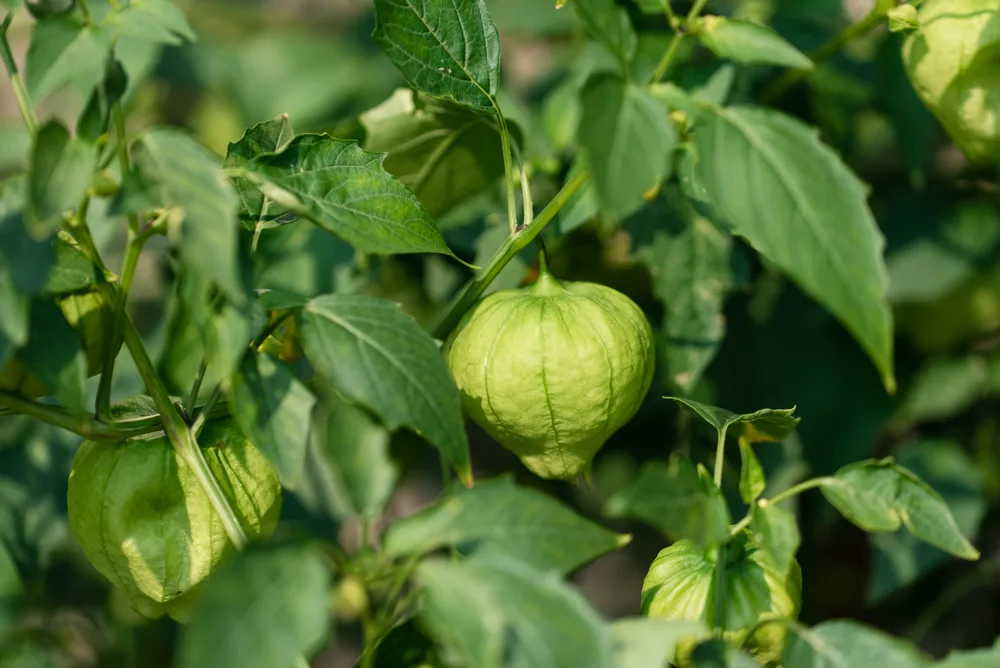
Flowers appear singly in leaf axils and are yellow with brown splotches in the floral throat.
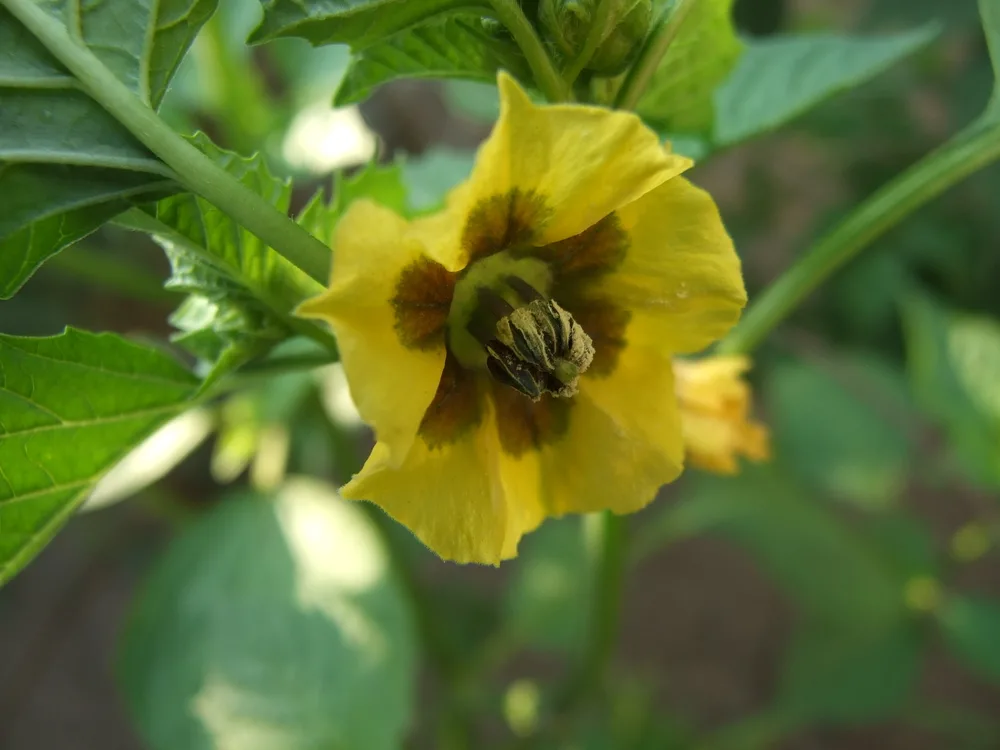
These blooms eventually develop into fruits (technically berries), each typically the size of a small plum.
Tomatillos are also known as husk tomatoes, due to the thin and papery skin that envelops the fruit. As they grow, they look like adorable paper lanterns hanging amid the foliage. Husks start out green but turn a light tan hue as time wears on. As the fruit swells in size, the tight fitting husk eventually splits open.
Beneath the husk, tomatillos look a lot like green tomatoes – plump, rounded, and sometimes kidney-shaped.

Tomatillo fruits change color as they ripen, usually green but also yellow or purple, depending on the cultivar.
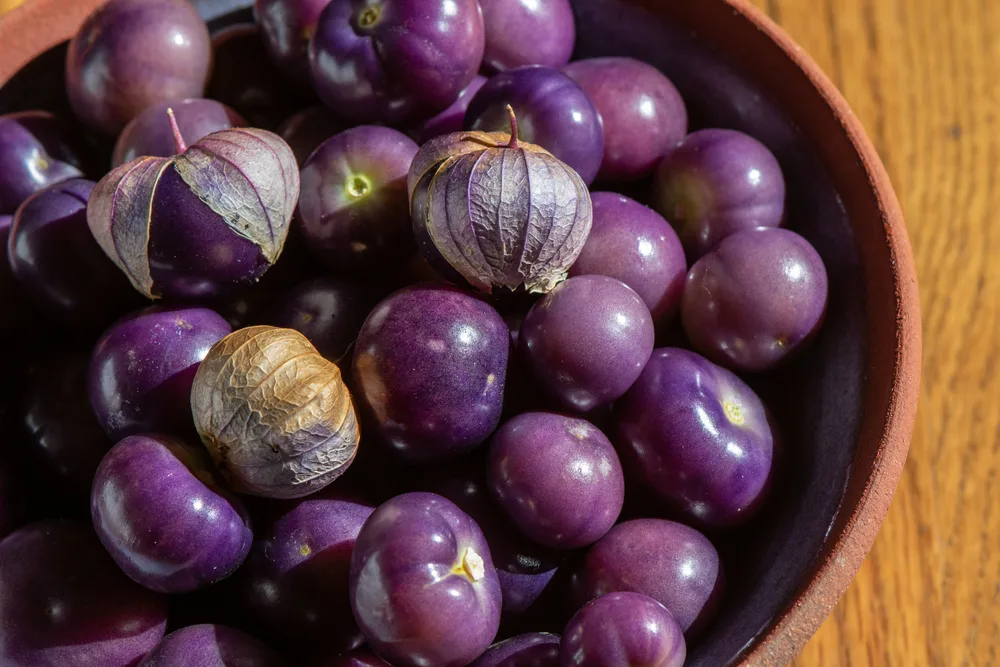
Tomatillo Varieties
Choose among several tomatillo cultivars to grow, each with their own distinct flavor, growth habit, fruit color, and time to harvest. Here are four popular homegrown varieties:
Toma Verde– 60 to 80 Days
As one of the earliest to mature varieties of tomatillo, ‘Toma Verde’ is a high-yielding crop despite being a bit more compact than other types. It’s a good candidate for container gardens but will still benefit from staking. Fruits are light green and firm, about 2-inches across. Toma Verde tomatillos are tart when fresh, sweeter when cooked.
Toma Verde seeds are available for purchase here.
Grande Rio Verde– 80 to 85 Days
‘Grand Rio Verde’ is another quick maturing tomatillo that produces larger apple-green fruits, 2 to 3 inches in diameter. A favorite for salsa-making, Grande Rio Verde fruit is sweet and tangy. Because it has a determinate growth habit, it suffers from far less sprawl than other tomatillo varieties. Good for containers and smaller gardens.
Grande Rio Verde seeds are available here.
Gigante – 100 Days
‘Gigante’ tomatillos provide the largest fruit – each about 4-inches in diameter. Sweeter than most other green tomatillo varieties, Gigante fruits are bright green and usually fall from the plant when ripe. This cultivar has an indeterminate habit that will need cages or staking.
Gigante seeds can be purchased here.
Purple de Milpa– 70 to 90 Days
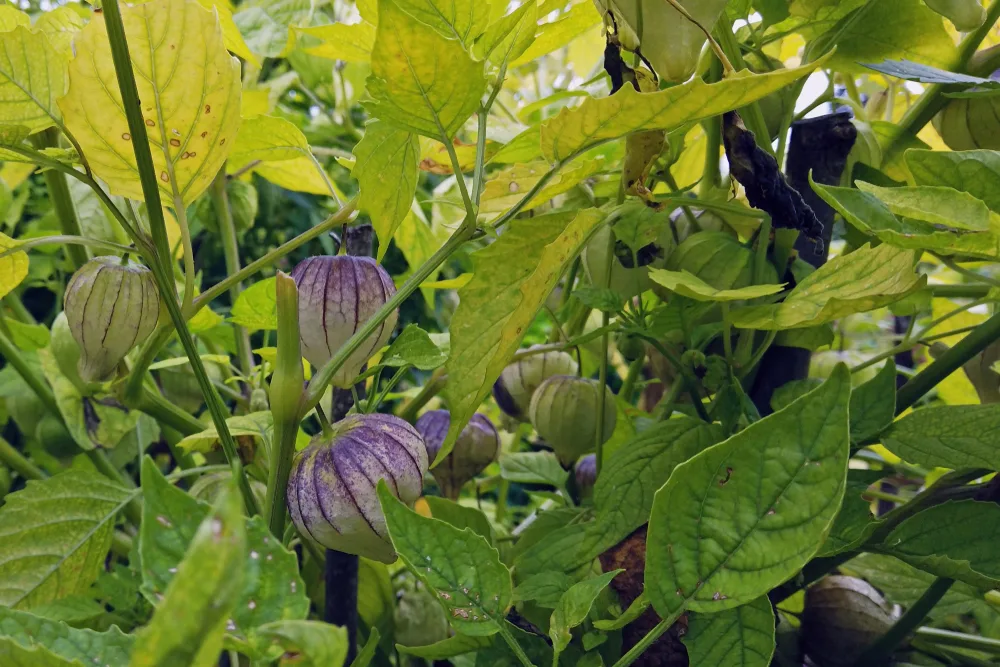
An heirloom variety, ‘Purple de Milpa’ is said to have originated in an unattended corn field in Mexico. It produces 2-inch fruits that start out green but turn a dusky purple hue wherever the husks split open and expose the skin to sunlight. Fruits are very sweet, ideal for making jams and desserts. Purple de Milpa is a vigorous spreading type that can reach 4 feet or more in height.
Purple de Milpa seeds can be purchased here.
Tomatillo Growing Conditions
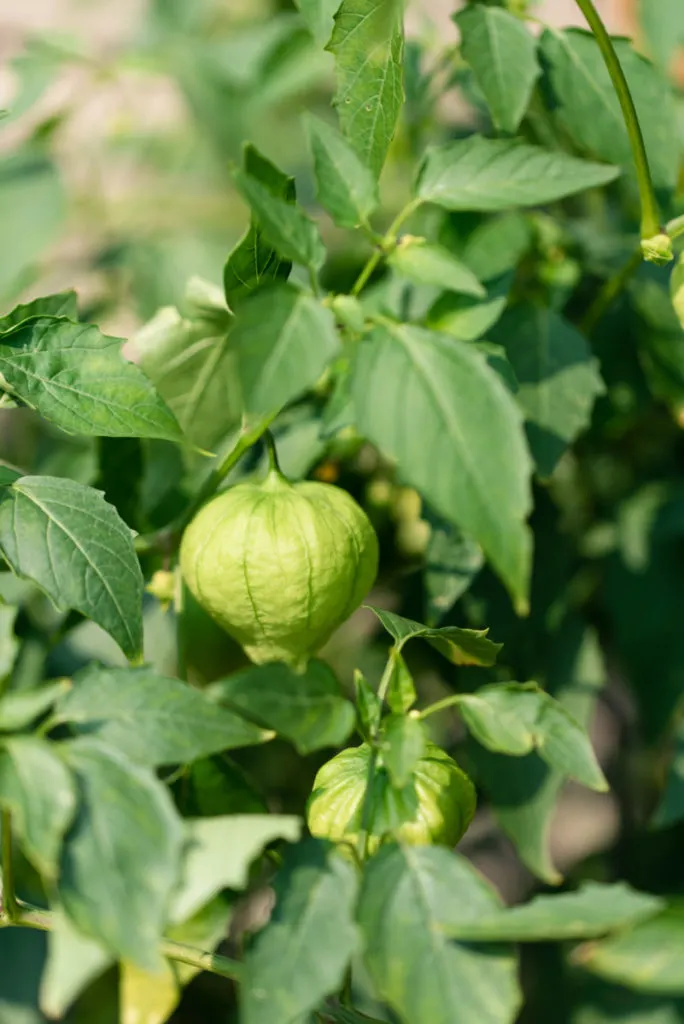
As a close cousin to the tomato, tomatillo plants have similar growing needs as their red-fleshed brethren.
Hardiness
Tomatillo is hardy in zones 8 to 10.
Light Requirements
Plant tomatillos in a spot that receives full sun.
Soil
Although tomatillo can adapt to various soil conditions, it will perform best in organically-rich and well-draining soil with a pH between 5.5 and 7.3.
Watering
Like tomatoes, tomatillos need to be kept moist. When grown in the garden, give plants 1 to 2 inches per week; when grown in containers, water daily or when the top inch of soil is dry.
Fertilizer
To keep tomatillo plants productive all season long, fertilize with compost tea every few weeks.
Plant Supports
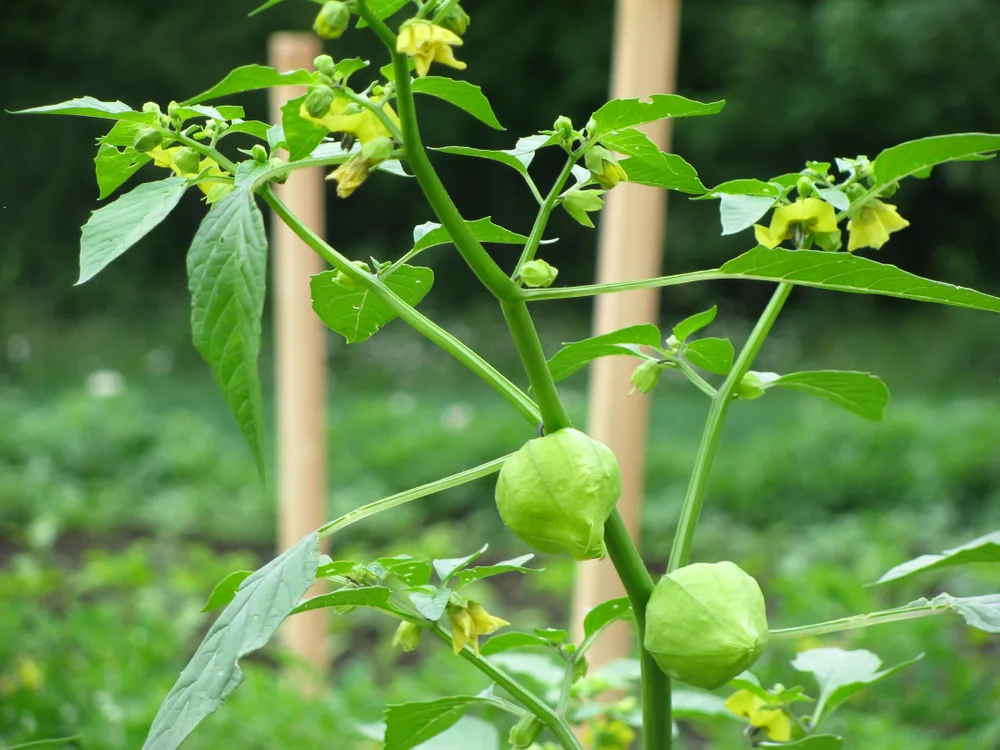
Tomatillo plants sprawl outward with numerous branches and suckers growing from the central stem – much like indeterminate tomato types. Prevent foliage from touching the ground by using stakes, tomato cages, or other plant supports to keep them upright.
Pollination
Tomatillos are not self-pollinating. Plan on growing at least two plants within 25 feet of each other to ensure fruit set.
Companion Plants
Plant marigold and nasturtiums near tomatillos to attract pollinators. Basil, chives, sage, parsley, mint, and garlic will help repel pests. Carrots, onions, and Brassicas grow nicely alongside tomatillos.
How to Grow Tomatillo From Seed
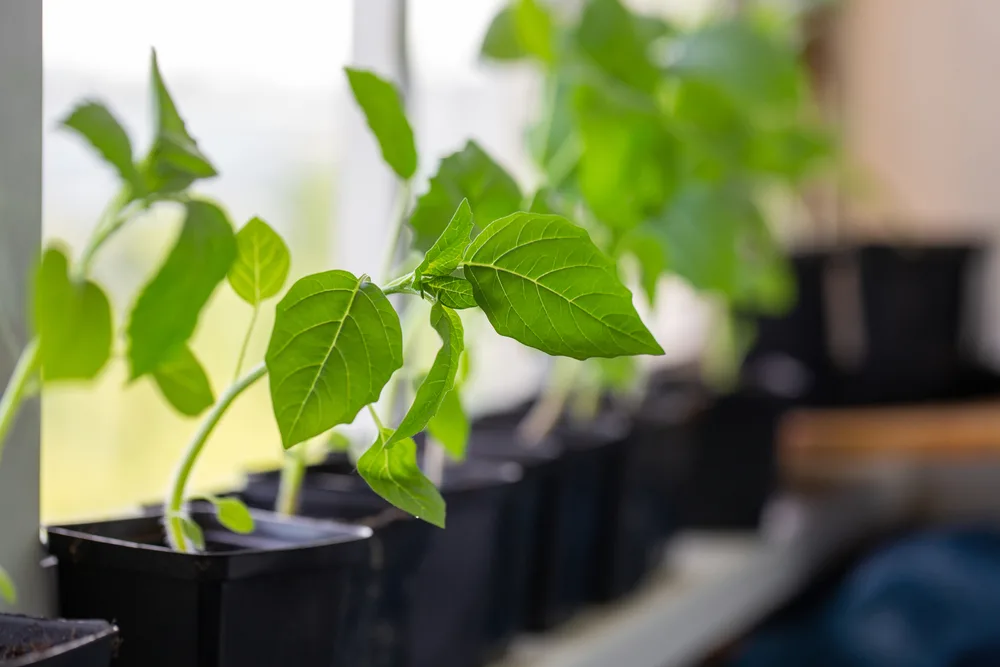
Since tomatillos are a warm season crop, they are very sensitive to cold and grow poorly in temperatures below 61°F (16°C).
Those blessed with a long growing season can sow tomatillo seeds directly in the garden, once night time temperatures are 65°F (18°C) and above.
Otherwise, seeds can be started indoors 4 to 8 weeks before the last frost date in your area.
- Sow seeds in individual pots, ¼ to ½ inch deep, in fertile potting soil.
- Moisten the soil and place pots in a warm place, away from direct sunlight.
- Seedlings should emerge from the soil in about a week.
- Move plants to a sunny spot and keep the soil consistently moist.
- When plants are at least 3 inches tall and outside temperatures have warmed, they can be hardened off and transplanted into the garden.
- Space plants 18 to 24 inches apart with 36 to 48 inches between rows.
How to Harvest Tomatillo
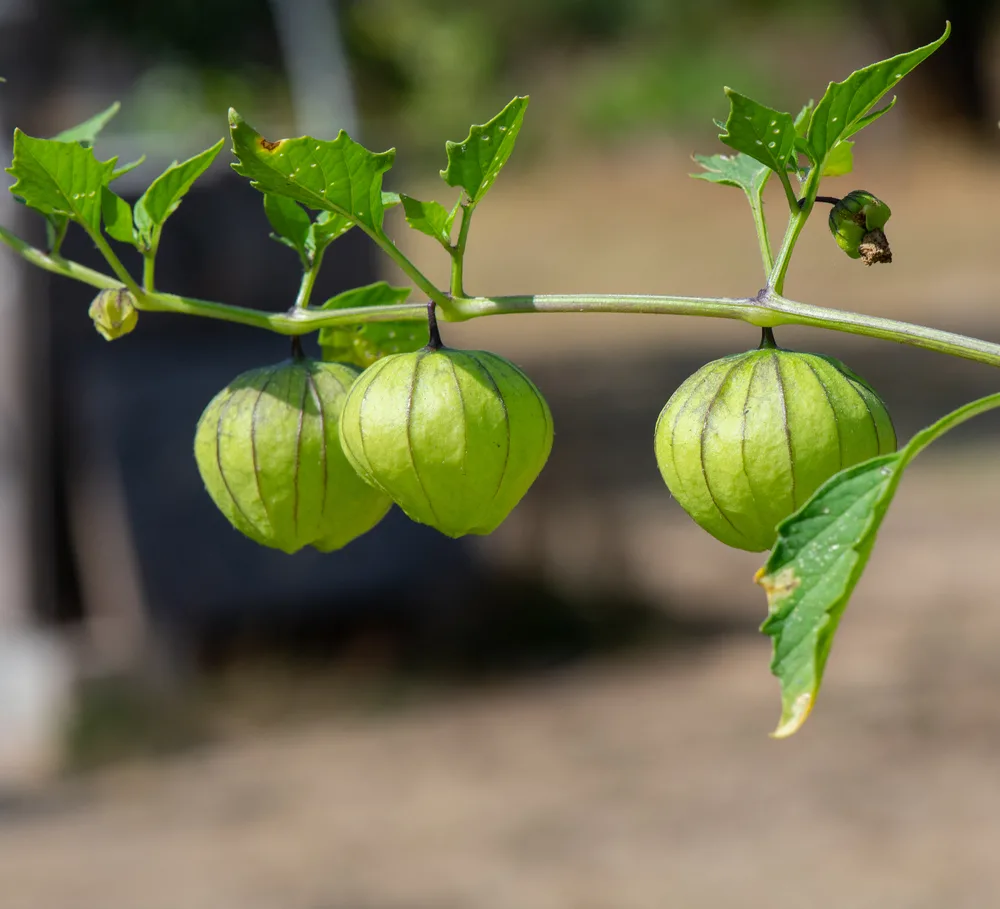
Tomatillo harvests are often incredibly bountiful. A single plant can produce as many as 60 to 200 tomatillos in a season, an average of 2 ½ pounds of zesty fruit.
Once plants begin fruiting, they will provide continuous harvests for one to two months, or up until the first frost.
Tomatillos are ripe and ready to be harvested when the fruit breaks free of its husk. Depending on the variety grown, the flesh should be light green (or yellow or purple).
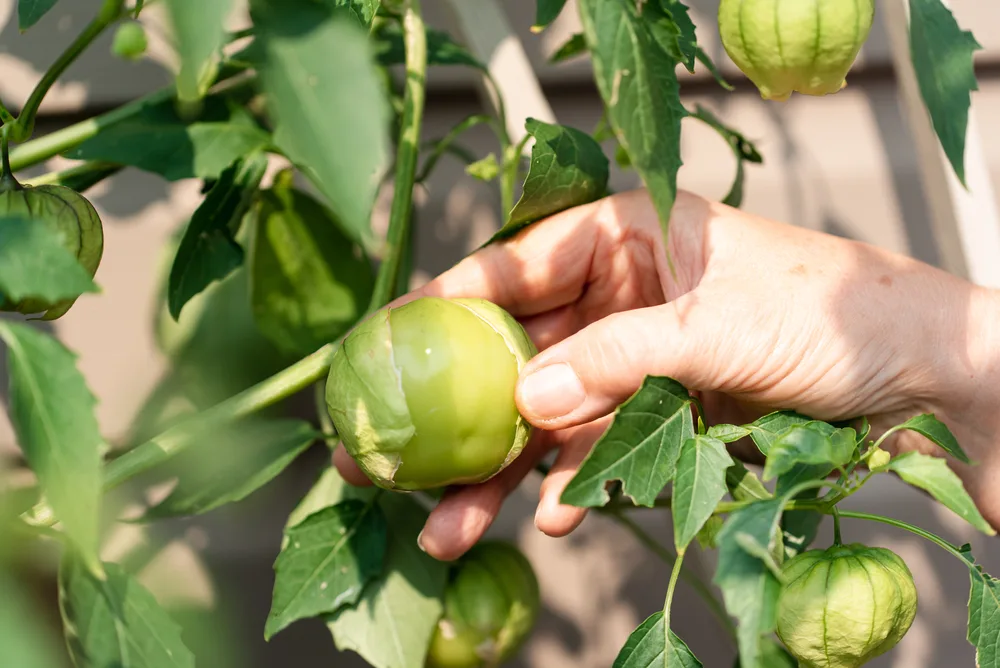
Collect tomatillos that have dropped to the ground too, as falling fruit also signals peak ripeness.
Traditional salsa verde is made with tomatillos that are not quite ripe. Pick these off the plant before the husk splits and while they are still bright green.
The longer you allow tomatillos to ripen, the sweeter they will be. But don’t leave them on the plant for too long or they will lose their tangy flavor. Green tomatillo varieties that have turned pale yellow, for instance, is a sign they are overripe.
How to Preserve and Store Tomatillo
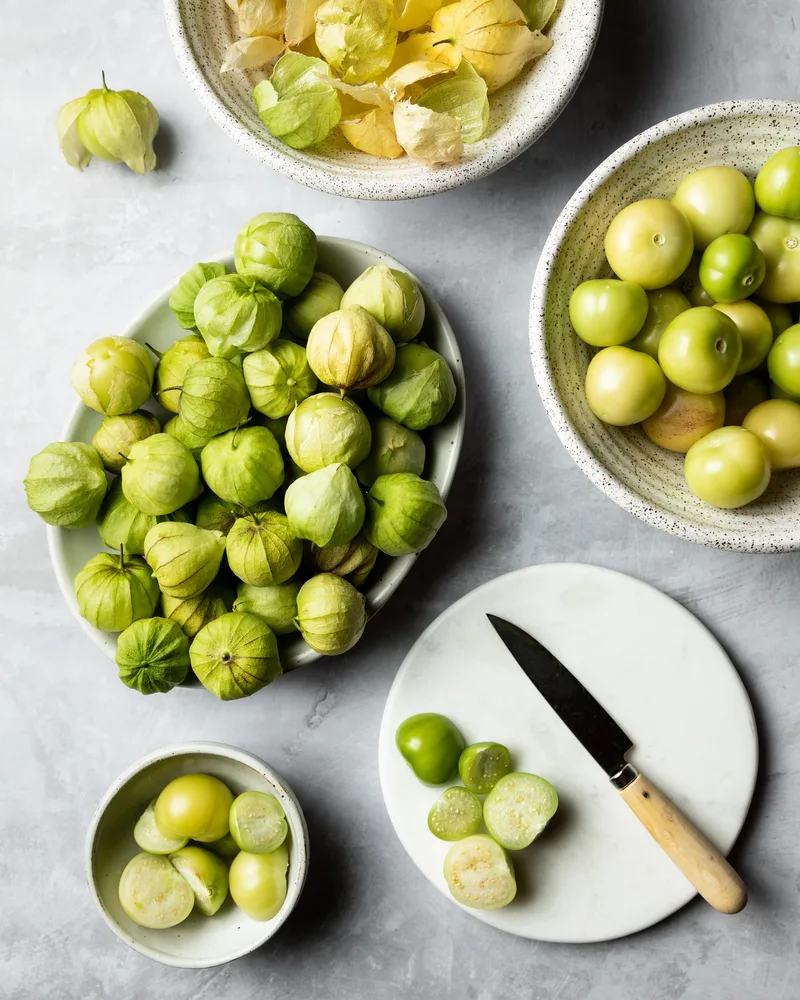
To enjoy tomatillos right away, simply peel off the papery husks. Beneath the peels, you’ll notice the fruits are covered in a sticky residue. This gummy film easily washes off by rinsing fruits thoroughly with cool water.
Tomatillo fruits can also be stored fresh in the refrigerator for two to three weeks. Keep the husks on the fruits when possible. If the husk is damaged or has been removed, place all nude tomatillos in a brown paper bag to simulate the husk.
To store tomatillos for up to 12 months, pop them in the freezer. Prep the fruits first by removing the husk and rinsing to remove the sticky coating. Dry them off really well before placing whole tomatillos in an airtight container or freezer bag..
Water bath canning tomatillos is another longer term storage option. Prepare them into sauces, salsas, and relishes beforehand or can tomatillos up whole.
Tomatillo Seed Saving
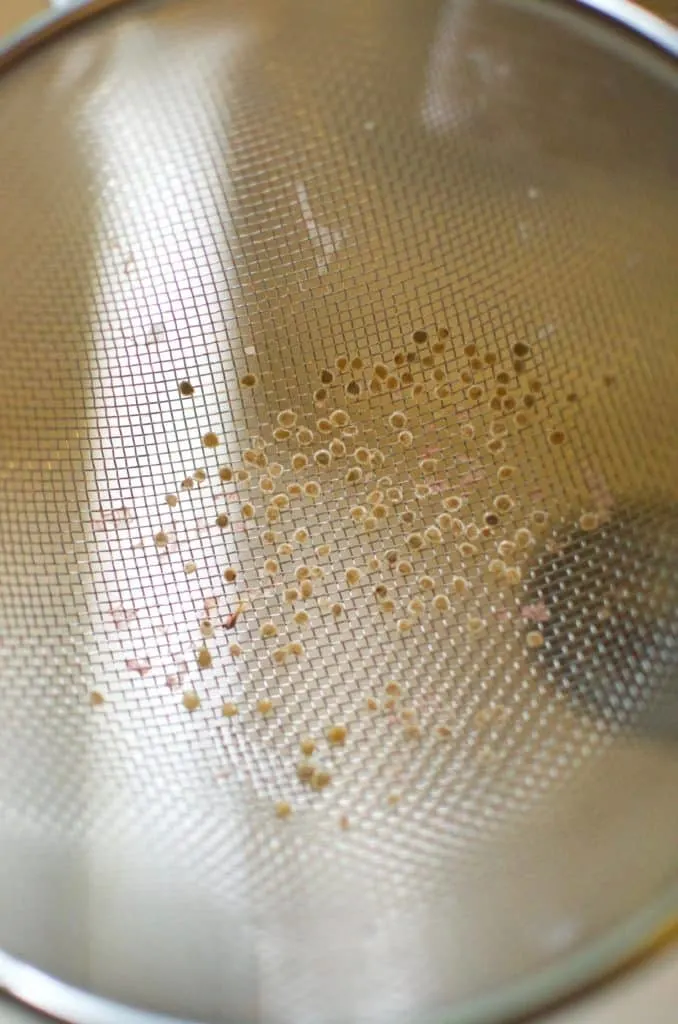
Unless you reside in zones 8 to 10 and can keep tomatillos as perennial plants, the first cold snap will put a quick end to your sprawling giants.
Learn how to save tomatillo seeds, though, and you will become a veritable tomatillo producing machine.
The procedure for saving tomatillo seeds is exactly the same as saving tomato seeds.
Place the seeds in water, allow them to ferment for a day or two, and collect the ones that have sunk to the bottom. Rinse the seeds well and lay them out to dry.
When stored in a cool and dry place, tomatillo seeds will remain viable for six years.
Tomatillo Diseases and Pests
Tomatillo plants are relatively trouble-free garden guests, though they are subject to similar pests that can afflict tomato plants.
Keep an eye out for damaged leaves and stems. Cutworm, whiteflies, potato beetles, and leaf miners are the more common culprits with tomatillos.
Prevent powdery mildew, black spot, and other fungal issues by giving plants lots of space with good air circulation. Don’t allow foliage to sprawl along the ground by always keeping tomatillo plants staked or caged.
Practicing good crop rotation will help stave off many pest and fungal diseases. Whenever possible, don’t plant tomatillos in the same spot in the garden as Solanaceae crops were grown within the past three years.

Get the famous Rural Sprout newsletter delivered to your inbox.
Including Sunday ramblings from our editor, Tracey, as well as “What’s Up Wednesday” our roundup of what’s in season and new article updates and alerts.

